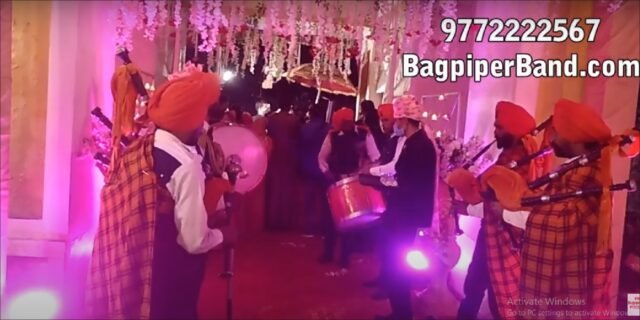Glossary of Bagpipe Terms: Your Ultimate Guide to Understanding Bagpipe Lingo
Ever heard a bagpiper talk about “gracings” or “hemp” and felt like they were speaking a secret code? Bagpipes come with a language as rich and vibrant as their sound, full of terms that can baffle newcomers. Whether you’re a budding piper, a curious fan, or just prepping for a wedding where a pipe band will steal the show, knowing the lingo makes you feel like part of the clan. This glossary breaks down the must-know bagpipe terms, from parts to playing techniques to cultural tidbits. Ready to decode the world of bagpipes? Let’s dive into this musical dictionary!
Introduction to Bagpipe Terminology (Glossary of Bagpipe Terms)
Why Learn Bagpipe Terms?
Imagine trying to cook a curry without knowing what “turmeric” or “simmer” means—pretty tough, right? Bagpipe terms are the spices of the piping world, helping you understand the instrument, its music, and its culture. Whether you’re buying a set, learning to play, or just geeking out over their history, knowing the jargon connects you to the bagpipe community. It’s like getting a backstage pass to a concert—you’ll appreciate the show so much more.
The Unique Language of Bagpipers : Glossary of Bagpipe Terms
Bagpipers have their own dialect, blending Scottish heritage with technical and musical terms. From “piobaireachd” to “sporran,” the words carry centuries of tradition, especially in places like India, where bagpipe bands light up weddings and parades. This glossary covers the essentials, so you can talk shop with pipers in Meerut or Mumbai without missing a beat. Let’s start with the nuts and bolts of the instrument itself.
Core Bagpipe Components : Glossary of Bagpipe Terms
Bagpipes are like a musical puzzle, with each piece playing a critical role. Here’s the lowdown on the main parts.
Glossary of Bagpipe Terms: Bag
The bag is the heart of the bagpipe, like a balloon that powers the whole show. It’s usually made of leather (sheepskin or cowhide) or synthetic materials like Gore-Tex. You fill it with air through the blowpipe, then squeeze it to send air to the pipes. A good bag is airtight and durable, costing ₹1,000-₹4,000 in India from suppliers like IndiaMART. It’s the engine that keeps the music flowing, so treat it like your best friend.
Glossary of Bagpipe Terms: Chanter
The chanter is where the melody happens. It’s a pipe with finger holes, like a recorder, that you play to create tunes. Made of wood (like rosewood) or plastic, it uses a reed to produce sound. Practice chanters, perfect for beginners, cost ₹600-₹2,000 on Flipkart. The chanter’s your voice in the band—when it sings, everyone listens.
Glossary of Bagpipe Terms: Drones
Drones are the bagpipe’s backup singers, adding that iconic, continuous hum. Usually two or three per set, they’re tuned to a single note and made of wood with reeds inside. In India, drone sets for Great Highland Bagpipes cost ₹2,000-₹8,000 from Meerut suppliers. They’re like the bassline in a rock song—steady, deep, and essential.
Glossary of Bagpipe Terms: Blowpipe
The blowpipe is your air hose, letting you puff air into the bag. It’s a simple tube, often wood or plastic, with a mouthpiece. A good blowpipe, priced at ₹500-₹1,500, feels comfy and durable. Think of it as the straw you use to blow life into the bagpipe’s soul—without it, there’s no music.
Glossary of Bagpipe Terms: Essential Playing Techniques
Playing bagpipes isn’t just about blowing air—it’s about finesse. These techniques are the tricks of the trade.
Glossary of Bagpipe Terms: Birl
A birl is a flashy, rapid finger movement on the chanter, creating a quick, rolling sound. It’s like a drumroll for your fingers, often used to add flair to tunes. Mastering the birl takes practice, but it’s a crowd-pleaser at weddings or parades. Watch YouTube tutorials from pros like Jori Chisholm to nail this one.
Glossary of Bagpipe Terms: Gracings
Gracings are quick, decorative notes that spice up a melody, like sprinkles on a cupcake. They include short bursts like grips, throws, or doublings, played between main notes. These are essential for traditional Scottish tunes and make your piping sound polished. Beginners start learning gracings on a practice chanter (₹600-₹2,000).
Glossary of Bagpipe Terms: Strike
A strike is a sharp, single tap on a chanter note, adding emphasis like an exclamation point in a sentence. It’s used to punctuate melodies or mark rhythm. You’ll hear strikes in lively marches, giving the music a crisp edge. Practice this on a chanter to get the timing just right.
Glossary of Bagpipe Terms: Doubling
Doubling means playing two quick notes of the same pitch, like a double-tap on a drum. It’s a type of gracing that adds texture to a tune. Common in fast-paced pieces, doubling shows off a piper’s skill. It’s tricky but worth mastering for that pro-level sound at gigs.
Glossary of Bagpipe Terms: Bagpipe Accessories and Gear
Beyond the instrument, accessories make a piper’s life easier and the band look sharp.
Reeds
Reeds are the magic wands of bagpipes, vibrating to create sound. Chanter reeds (₹275-₹1,200) and drone reeds (₹950-₹8,600) are made from cane or synthetic materials. They wear out every 3-6 months, so stock up from IndiaMART or Meerut suppliers. A bad reed is like a flat tire—replace it, or your music stalls.
Sporran
The sporran is a pouch worn with a kilt, since kilts have no pockets. Made of leather or faux fur, it holds essentials like keys or reeds and costs ₹1,000-₹5,000. In India, suppliers like T.R. Musicals offer sporrans with tartan or clan designs, adding swagger to your band’s look.
Kilt
The kilt is the bagpiper’s signature outfit, a pleated skirt in tartan or solid colors. Wool kilts cost ₹2,000-₹10,000, while synthetic ones start at ₹1,000 on Flipkart. It’s like a superhero cape—wearing one makes you feel ready to lead a parade or rock a wedding baraat.
Moisture Control System
Bagpipes hate moisture, especially in India’s humid climate. A moisture control system, like a canister or trap, catches water from your breath, protecting the reeds. Priced at ₹1,000-₹2,000 from Amazon or IndiaMART, it’s like an umbrella for your pipes, keeping them dry and sounding crisp.
Types of Bagpipes
Not all bagpipes are the same. Here are the main types you’ll hear about.
Great Highland Bagpipes
Great Highland Bagpipes (GHB) are the rockstars, known for their loud, bold sound. Used in Indian weddings and pipe bands, they’re made of rosewood or blackwood and cost ₹4,000-₹1,42,000 in India. They’re the go-to for traditional Scottish music and big events, like the star of the show.
Smallpipes
Smallpipes are the quieter cousins of GHBs, perfect for indoor gigs or solo practice. Bellows- or mouth-blown, they’re less common in India but available through exporters for ₹10,000-₹30,000. Think of them as the acoustic guitar to the GHB’s electric—mellow but soulful.
Uilleann Pipes
Uilleann pipes, Ireland’s pride, are bellows-blown with a softer, sweeter tone. They’re complex, with regulators for harmony, and cost ₹20,000-₹50,000 from international sellers like Ubuy. Rare in India, they’re like the jazz of bagpipes—intricate and expressive.
Musical and Performance Terms
Bagpipe music has its own vocabulary, steeped in tradition and style.
Piobaireachd
Piobaireachd (pee-brock) is the classical music of bagpipes, slow and expressive pieces often called “pibroch.” It’s like a musical poem, telling stories through long, intricate melodies. Played solo, it’s a staple in competitions and requires years to master. Check Dojo U for tutorials.
Ceol Beag
Ceol Beag means “light music” in Gaelic, covering lively tunes like marches, reels, and jigs. It’s the foot-tapping stuff you hear at weddings or parades, perfect for pipe bands. In India, bands use Ceol Beag for baraats, making it the life of the party.
Tuning
Tuning keeps your bagpipes in harmony. Drones are adjusted to match the chanter’s pitch, a process that’s like tuning a guitar but trickier. Pipers use their ears or electronic tuners (₹1,000-₹3,000) to get it spot-on. Bad tuning? It’s like singing off-key—nobody wants that.
Cultural and Historical Terms
Bagpipes carry centuries of history, and these terms reflect their roots.
Tartan
Tartan is the patterned fabric of kilts and bags, often tied to Scottish clans or custom designs. In India, bands use tartan or solid colors, costing ₹1,000-₹5,000 for bags or kilts. It’s like a family crest, showing pride and identity in every pleat.
Pipe Band
A pipe band is a group of pipers and drummers, like a musical army. Common in India for weddings and school events, they wear matching uniforms and play in sync. Joining one, often through Meerut or Delhi bands, is a great way to learn and perform.
Pibroch
Pibroch is another term for piobaireachd, the soulful, classical bagpipe music. It’s steeped in Scottish tradition but played worldwide, including by solo pipers in India. Think of it as the opera of piping—deep, emotional, and a test of skill.
Maintenance and Craftsmanship Terms
Keeping bagpipes in top shape requires knowing these terms.
Hemp
Hemp is waxed thread used to seal joints between pipes and the bag, ensuring an airtight fit. A roll costs ₹200-₹500 on IndiaMART. It’s like duct tape for bagpipes—simple but essential for keeping the music flowing without leaks.
Seasoning
Seasoning is a sealant applied to leather bags to prevent air leaks and drying out. Costing ₹500-₹1,000, it’s a must for traditional bags in India’s humid climate. Think of it as lotion for your bagpipe, keeping it supple and ready to play.
Ferrules
Ferrules are metal or synthetic bands on pipes, adding strength and style. Priced at ₹300-₹1,000 per set, they’re like jewelry for your bagpipes, protecting joints and looking sharp. Check Meerut suppliers for affordable, durable options.
Conclusion
Bagpipe lingo is like a secret handshake—it opens the door to a world of music, tradition, and community. From the bag and chanter to gracings and pibroch, these terms help you navigate the instrument’s craft and culture. Whether you’re buying a set from IndiaMART, joining a pipe band in Delhi, or just curious about the pipes’ magic, this glossary has you covered. So, why not grab a practice chanter, learn a birl or two, and join the bagpipe crew? The pipes are calling, and now you know exactly what they’re saying!
FAQs
What’s the difference between a chanter and a practice chanter?
A chanter is the melody pipe in a full bagpipe set, while a practice chanter is a standalone version for learning fingerwork. Practice chanters cost ₹600-₹2,000 and don’t require a bag.
Why are drones important in bagpipes?
Drones provide the continuous hum that defines the bagpipe’s sound, harmonizing with the chanter. They cost ₹2,000-₹8,000 in India and are tuned to a single note for depth.
What does “gracings” mean in bagpipe music?
Gracings are quick, decorative notes like birls or strikes that embellish melodies. They add flair to tunes, especially in Ceol Beag, and are learned on a practice chanter.
How often should I replace bagpipe reeds?
Reeds wear out every 3-6 months, depending on use. Chanter reeds cost ₹275-₹1,200, drone reeds ₹950-₹8,600. Buy from IndiaMART to keep your pipes sounding crisp.
What’s the role of a sporran in a bagpiper’s uniform?
A sporran is a pouch worn with a kilt to hold essentials, costing ₹1,000-₹5,000. It’s both practical (no kilt pockets!) and stylish, often matching the band’s tartan.

Tag: Glossary of Bagpipe Terms




